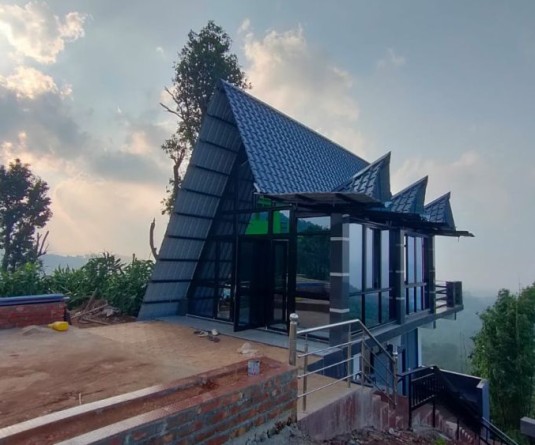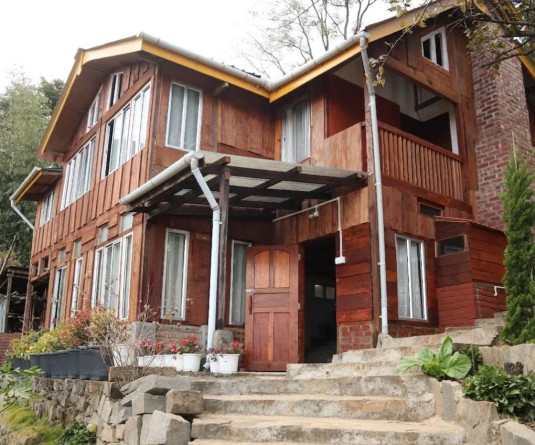With the increasing number of vehicles on the roads of Nagaland, the Traffic Police is working to educate people on road safety and responsible driving. (Morung File Photo)
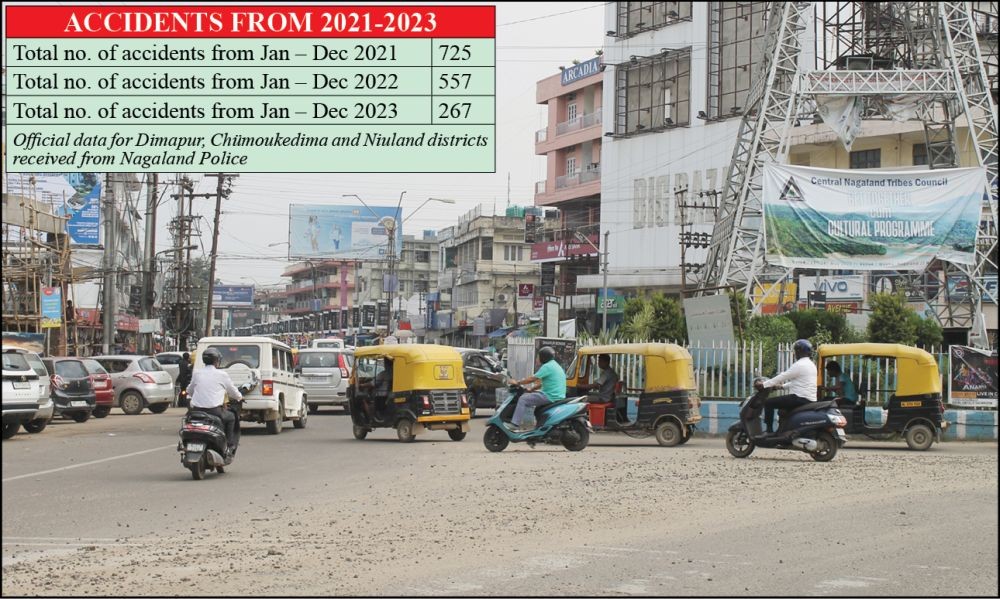
Kanili Kiho
Dimapur | January 18
The National Road Safety Week 2024 was observed from January 11 to 17 across India. Under the initiative of the Ministry of Road Transport & Highways, the week fosters an annual commitment to raise concern on the rising violence on Indian roads and to promote responsible driving etiquette.
In Dimapur, Nagaland’s commercial city, the week-long affair was executed with awareness drive on road safety, with officers from the Traffic Police Department visiting schools and colleges, while for the larger part of commuters; the week may have slipped by.
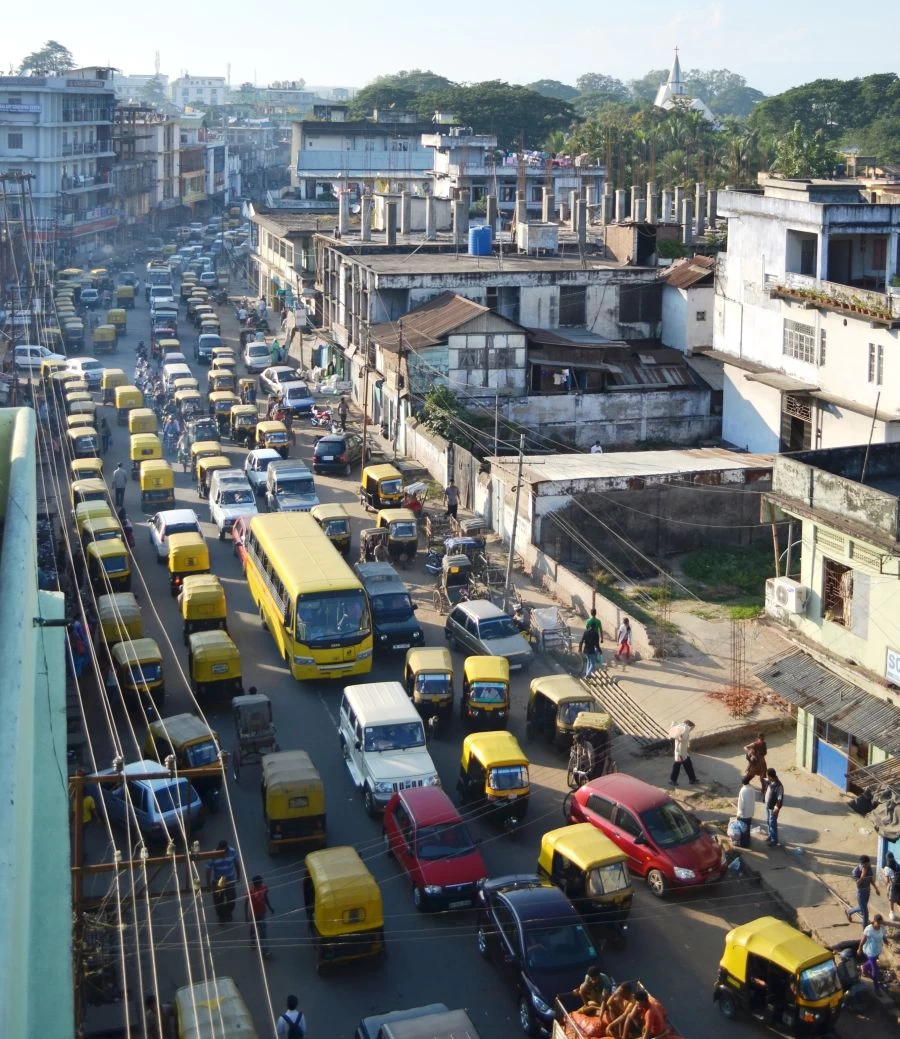
“It is just the beginning,” Deputy Commissioner of Police (Traffic), I Meren Chenth told The Morung Express on the ongoing programmes being initiated by the department. “It will be a year-long event where we are trying to target the ‘grassroots,’ towards conscious and responsible driving,” he said.
With majority of the drivers being illiterate, he noted the difficulty in reaching out to them. Hence, the officer said the idea was to educate children in schools so that they will be in a better position to in turn, instruct their parents and families.
Last year, the department conducted the first phase of awareness programmes in schools and colleges, with the second phase underway this year. The department has set up a target to cover maximum number of institutions (both government and private) for the whole year within Dimapur, Chümoukedima and Niuland districts. Gradually, it will sketch out plans to cover the remaining districts as well, the officer informed.
During the drive, booklets and calendars 2024 on road safety produced by Dimapur Traffic Police are being distributed. Students are educated on the road safety habits, traffic rules and regulations, traffic road signs, how to board and de-board the bus etc. The Good Samaritan initiative is especially being encouraged among the students, he said.
On the technology front, the Deputy Commissioner of Police (DCP) touched on the importance of introducing intelligent traffic control system, wherein the whole of the city’s traffic will be monitored digitally through high resolution CCTVs in a single controller room. He said the department has written to the higher authority on the matter.
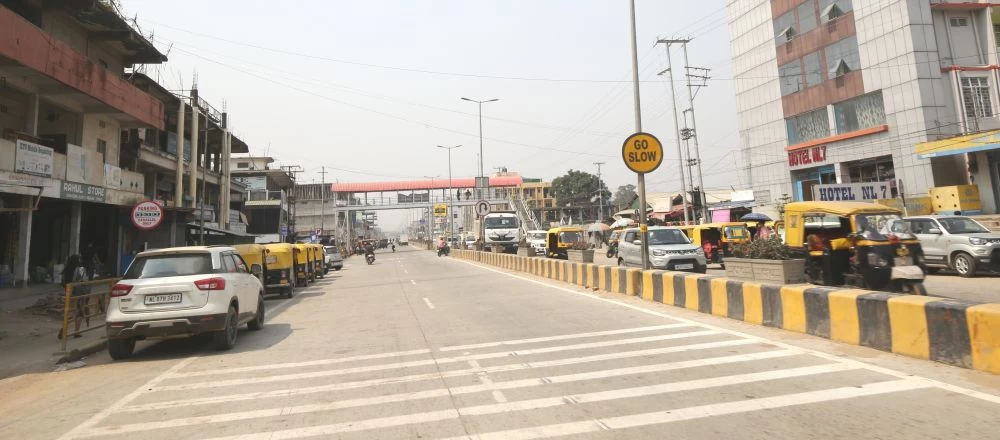
Mention may be made that the department had come up with Improvised Traffic Control System (ITCS) under the National Clean Air Programme (NCAP) and Nagaland Pollution Control Board (NPCB), which has been introduced in two crucial junctions of Dimapur. Once people get familiarized with the improvised traffic system, then slowly the intelligent traffic management system can be introduced, he added.
Updating on the accident statistics, Chenth informed that compared to the last two years— 2021 and 2022, the accident rate has considerably reduced within the three districts (Dimapur, Chümoukedima and Niuland) in 2023 to more than 50% percent.
“So, I think we are on the right track, and God willing, it will continue to decrease and that people are more mindful about the aspect of road safety.”
Stressing on the importance of conscious and responsible driving, the DCP further called for concerted efforts from all road users— drivers, passengers and pedestrians to ensure safer roads for everyone.
While the State is left wanting of basic infrastructure even in towns, he maintained that in order to create a robust safe space, it ultimately boils down to the citizens. Public perception to be responsive on road safety has to be built, he emphasized while reiterating, “We should all be socially responsible.”
Commuters share on daily challenges
This newspaper also spoke to commuters on the challenges they face daily, and possible solutions to a safer road. A concerned commuter pointed out that while driving along the stretch of National Highway 29 from Purana Bazaar to Chümoukedima, though the speed limit has been set at a maximum of 50 km/h by the administration, most of the drivers do not follow the set rules. “Over-speeding has always been the reason for most accidents along the highway,” he noted.
According to him, the traffic cops/authorities should check the motorists/drivers by intercepting them and challan them “heavily.” Highway patrol cars should be stationed in all major intersections for that, he suggested.
Lack of basic driving etiquette on highways was another reason echoed by many, such as not using proper signals/light indicators while taking a turn or overtaking, especially when the car is being parked and one is about to start the car, etc.
One person proposed conducting proper test for all applicants before issuing driver’s license by the competent authority.
Another concern to road related casualties were pedestrians who are “too lazy” to take the foot overbridge along the stretch and instead risk their lives crossing the highway. While maintaining that such things should be checked, he said proper road markings should be made in places where there is no foot overbridge.
Another exasperated commuter said giant potholes are a big issue, since every driver swerves, in order to avoid it. “This also causes us to drive on the wrong lane sometimes,” she admitted.
She pointed out that auto rickshaws are a “big menace” on the busy streets of Dimapur, where the drivers cut the cars even from the wrong side in a bit to rush to their destination faster.
The young woman highlighted on the need for setting up proper street lights along the roads. “Driving at night becomes a hurdle since we cannot see people or cycles crossing, because of lights from the opposite direction.”
Among the many concerns raised by commuters relating to poor driving patterns, the use of high-beam headlights without caution was at the top. “While it can provide greater visibility for the driver, it poses huge threat to the other drivers, causing them to lose focus on the road ahead, leading to accidents,” another pointed out. Under the Motor Vehicles Act 1988, a driver using high-beam headlights inappropriately will be fined. It should only be used when driving on a dark or poorly lit road and if no other vehicles are approaching.



